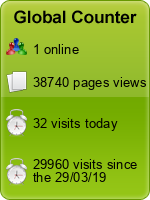ANALISIS NIAT UNTUK MENGGUNAKAN APLIKASI BELLA DENGAN PENDEKATAN TECHNOLOGY ACCEPTANCE MODEL
Abstract
Keywords
Full Text:
PDFReferences
Davis, F.D. 1989. Perceived Usefulness, Perceived Ease Of Use And User Acceptance Of Information Technology. MIS Quarterly, Vol. 13, No.3, hal. 319-340.
Dewi, L., Kharisma, A. S., & Asy’ari, A. N. (2020). Evaluasi Tingkat Penerimaan E-Learning Pada Mahasiswa Bidang Keilmuan Sosial Dan Teknik Dengan Technology Acceptance Model(Tam). Jurnal Pendidikan Akuntansi Indonesia, 18(1), 01–11. https://doi.org/10.21831/jpai.v18i1.27336
Ghozali, I. (2016). Ekonometrika : Teori, Konsep dan Aplikasi dengan IBM SPSS 22. Badan Penerbit Universitas Diponegoro
Handayani, W. P. P., & Harsono, M. (2016). Aplikasi Technology Acceptance Model (Tam) Pada Komputerisasi Kegiatan Pertanahan. Jurnal Economia, 12(1), 13-22.
Infeksi Emerging Kementerian Kesehatan RI https://infeksiemerging.kemkes.go.id/
Jogiyanto. (2007). Sistem Informasi Keperilakuan. Yogyakarta: CV. Andi Offset
Oktaviany, D., & Novita, D. (2016). Analisis Penerimaan Layanan Web Tracking dengan Penerapan Technology Acceptance Model (TAM). Jatisi, 3(1), 46–60.
Pantow, A. K., Sungkowo, B., Limpeleh, E. A. N., & Tand, A. A. (2021). Penerimaan Mahasiswa Akuntansi atas Aplikasi Myob Accounting dengan Pendekatan Technology Acceptance Model. Owner, 5(1), 22–30. https://doi.org/10.33395/owner.v5i1.314
Pradana, F., Bachtiar, F. A., & Priyambadha, B. (2018). Pengaruh Elemen Gamification Terhadap Hasil Belajar Siswa Pada E-Learning Pemrograman Java. Semnasteknomedia, 7–12.
Rahayu, F. S., Budiyanto, D., & Palyama, D. (2017). Analisis Penerimaan E-Learning Menggunakan Technology Acceptance Model (Tam) (Studi Kasus: Universitas Atma Jaya Yogyakarta). Jurnal Terapan Teknologi Informasi, 1(2), 87–98. https://doi.org/10.21460/jutei.2017.12.20
Rahmawati, R. N., & Narsa, I. M. (2019). Intention to Use e-Learning: Aplikasi Technology Acceptance Model (TAM). Owner, 3(2), 260. https://doi.org/10.33395/owner.v3i2.151
Sugihartono, T., Rian, R., & Putra, C. (2020). Analisis Kepuasan Pengguna Menggunakan Technology Acceptance Model pada Sistem Pelayanan Publik. Satin, Vol. 06, No(2020), 96–105.
https://doi.org/10.33372/stn.v6i2.651
Udayanti, Erika Devi dan Nugroho, Fajar Agung. (2018) Analisa Minat Penggunaan Aplikasi TB eScoring dengan Pendekatan Technology Acceptance Model (TAM). Edu Komputika Journal, 5(1), 1-12. https://doi.org/10.15294/edukomputika.v5i1.23331
Wida, P. A. M. W., Yasa, N. N. K., & Sukaatmadja, I. P. G. (2016). Aplikasi Model TAM Pada Perilaku Pengguna Instagram. Http://Jurnal.Unmas.Ac.Id/Index.Php/JUIMA/Article/View/515,778–783
DOI: http://dx.doi.org/10.52429/smj.v4i2.1002
Refbacks
- There are currently no refbacks.

This work is licensed under a Creative Commons Attribution-NonCommercial 4.0 International License.






